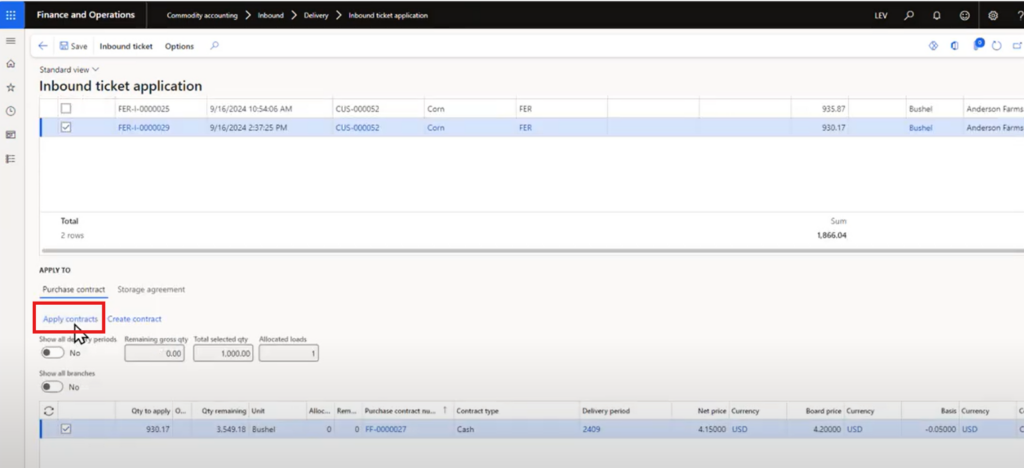Inbound Ticket Discount Schedules and Post Shrink
In Levridge 2024 Release 2.0, a series of improvements have been introduced that significantly enhance how inbound tickets are managed, especially with the inclusion of discount schedules and the ability to post tickets to inventory before they are applied to contracts.
The Role of Inbound Scale Tickets
Inbound scale tickets are crucial for tracking the quantity and quality of commodities received, like grains, oilseeds, or any other bulk products. In the past, scale tickets could only be posted to inventory after they had been applied to a contract, which introduced delays in updating inventory records. These tickets contain detailed information, such as gross weight, net weight after deductions, and other factors that determine how much of the commodity is actually usable.
Managing Discount Schedules and Shrink in Real-Time
One of the most significant features added in Levridge 2024R2 is the ability to apply a discount schedule to an inbound ticket at the time of its creation. This schedule accounts for quality factors like moisture, test weight, and foreign material content, which often lead to a reduction in the quantity of usable product, known as shrink. By applying the discount schedule during ticket creation, users can see real-time adjustments to the net quantity as soon as the ticket is posted to inventory.
Let’s consider a real-world example from the transcript where a company receives a corn shipment. The inbound ticket notes that the gross weight of the shipment is 1,000 bushels. However, when the quality factors (such as moisture at 18.9% and test weight at 55) are factored in, the system applies the appropriate discount schedule, resulting in a net quantity of 930.18 bushels. This adjustment reflects the actual usable amount of the commodity after shrink has been accounted for.

Posting Inbound Tickets to Inventory
In previous versions, inventory updates could not occur until a ticket had been linked to a contract, which created potential delays in accurate inventory reporting.
Now, users can post the ticket as soon as the necessary data is entered, and the system generates two journal entries: one for the gross quantity and another for the shrink. This feature ensures that the company’s inventory records are updated in real-time, even if the ticket has not yet been assigned to a contract.

For example, if the system receives an inbound ticket for 1,000 bushels of corn and applies a shrink factor, the gross quantity is recorded, but the net quantity, after shrinkage, is also posted. In this case, two journal entries are created: one for the 1,000 bushels received and another for the 69.83 bushels lost to shrink. This ensures that the inventory reflects the actual amount available for sale or use, and helps businesses avoid discrepancies between what was received and what can be used. This feature also allows businesses to run daily position reports that accurately reflect their current inventory levels.

Applying Tickets to Contracts
Once an inbound ticket has been posted to inventory, it can still be applied to a contract at a later time. The system retains a record of all posted tickets, making it easy for users to review and assign tickets to the appropriate contracts when they are finalized. This functionality ensures that the system remains flexible and adaptable to the business’s needs.

The Impact on Business Processes
1. Improved Workflow Efficiency: By allowing inbound tickets to be posted to inventory before they are applied to contracts, the system eliminates delays in updating inventory records. This real-time accuracy is particularly valuable for businesses managing large quantities of commodities.
2. Accurate Inventory Tracking: The automatic calculation of shrink and the use of discount schedules ensure that businesses are working with accurate data regarding the usable amount of the commodity. This improves decision-making related to sales, storage, and future purchases.
3. Flexibility in Contract Management: The ability to post tickets to inventory independently of contracts gives businesses more flexibility, especially when contracts are still being negotiated or finalized.
4. Enhanced Risk Management: Real-time updates to inventory levels and the ability to adjust for shrink immediately helps businesses manage risks related to stock shortages, quality issues, and price fluctuations.